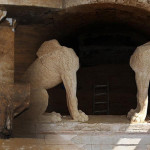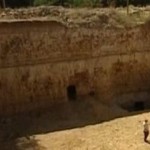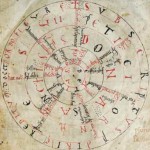Multispectral Imaging Reveals Hidden Secrets of 1491 World Map
A 500 year old map reveals its hidden secrets through cutting edge technology, multispectral imaging, the map may have influenced Christopher Columbus and his famous voyage to discover the New World.
The map was made by Henricus Martellus in 1491 and is thought to be based off the Egyptus Novelo Map. The map when received by Yale was faded and damaged. Through a light imaging process, amazing details have been recovered on this historical map. (See Video Below)
Henricus Martellus Germanus is the latinized name of Heinrich Hammer, a German geographer and cartographer who lived and worked in Florence from 1480 to 1496.
Around 1489 or 1490, he produced a world map which was remarkably similar to the terrestrial globe later produced by Martin Behaim in 1492, the Erdapfel.
Both show novel adaptions of the existing Ptolemaic model, opening a passage south of Africa and creating an enormous new peninsula east of the Golden Chersonese (Malaysia). Both possibly derive from maps created around 1485 in Lisbon by Bartolomeo Columbus.
One of his two manuscript world maps, 201 cm x 122 cm in size, rediscovered in 1960, was donated to Yale’s Beinecke Rare Book and Manuscript Library.
A Multispectral Image is one that captures image data at specific frequencies across the electromagnetic spectrum. The wavelengths may be separated by filters or by the use of instruments that are sensitive to particular wavelengths, including light from frequencies beyond the visible light range, such as infrared. Spectral imaging can allow extraction of additional information the human eye fails to capture with its receptors for red, green and blue. It was originally developed for space-based imaging.
Multispectral images are the main type of images acquired by remote sensing (RS) radiometers. Dividing the spectrum into many bands, multispectral is the opposite ofpanchromatic, which records only the total intensity of radiation falling on each pixel. Usually, satellites have three or more radiometers (Landsat has seven). Each one acquires one digital image (in remote sensing, called a ‘scene’) in a small band of visible spectra, ranging from 0.7 µm to 0.4 µm, called red-green-blue (RGB) region, and going to infrared wavelengths of 0.7 µm to 10 or more µm, classified as near infrared (NIR), middle infrared (MIR) and far infrared (FIR or thermal). In the Landsat case, the seven scenes comprise a seven-band multispectral image. Spectral imaging with more numerous bands, finer spectral resolution or wider spectral coverage may be calledhyperspectral or ultraspectral.
This technology has also assisted in the interpretation of ancient papyri, such as those found at Herculaneum, by imaging the fragments in the infrared range (1000 nm). Often, the text on the documents appears to the naked eye as black ink on black paper. At 1000 nm, the difference in how paper and ink reflect infrared light makes the text clearly readable. It has also been used to image the Archimedes palimpsest by imaging the parchment leaves in bandwidths from 365-870 nm, and then using advanced digital image processing techniques to reveal the undertext with Archimedes’ work.




